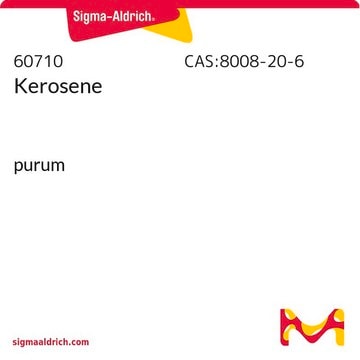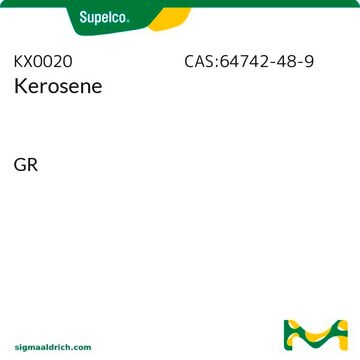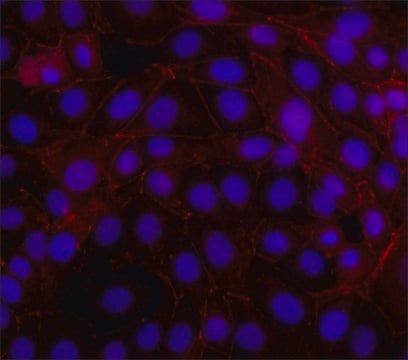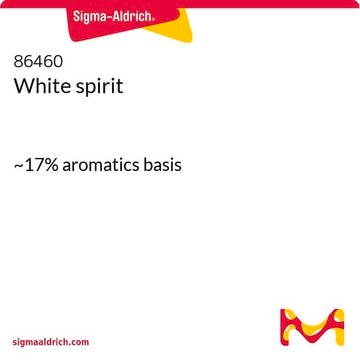329460
Kerosene
reagent grade, low odor
About This Item
Productos recomendados
grado
reagent grade
Nivel de calidad
densidad de vapor
4.5 (vs air)
presión de vapor
0.23 mmHg ( 20 °C)
Formulario
liquid
temp. de autoignición
442 °F
lim. expl.
5 %
bp
190-250 °C (lit.)
densidad
0.8 g/mL at 25 °C (lit.)
¿Está buscando productos similares? Visita Guía de comparación de productos
Descripción general
Aplicación
- As a fuel in the preparation of kerosene–alumina nanofluid.
- In the preparation of carbon nanoparticles (CNPs) by an incomplete combustion method.
- In the synthesis of wrinkled graphene nanostructures by thermal decomposition followed by modified Hummers′ method.
Características y beneficios
- High density
- High enthalpy
- Easy storage
Cantidad
18.9 L = 5 gal
Palabra de señalización
Danger
Frases de peligro
Consejos de prudencia
Clasificaciones de peligro
Aquatic Chronic 2 - Asp. Tox. 1 - Skin Irrit. 2 - STOT SE 3
Órganos de actuación
Central nervous system
Código de clase de almacenamiento
3 - Flammable liquids
Clase de riesgo para el agua (WGK)
WGK 2
Punto de inflamabilidad (°F)
179.6 °F - closed cup
Punto de inflamabilidad (°C)
82 °C - closed cup
Elija entre una de las versiones más recientes:
¿Ya tiene este producto?
Encuentre la documentación para los productos que ha comprado recientemente en la Biblioteca de documentos.
Los clientes también vieron
Protocolos
Accurately measure moisture content in kerosene through Karl Fischer titration, using both volumetric and coulometric methods for reliable results.
Accurately measure moisture content in kerosene through Karl Fischer titration, using both volumetric and coulometric methods for reliable results.
Accurately measure moisture content in kerosene through Karl Fischer titration, using both volumetric and coulometric methods for reliable results.
Accurately measure moisture content in kerosene through Karl Fischer titration, using both volumetric and coulometric methods for reliable results.
Nuestro equipo de científicos tiene experiencia en todas las áreas de investigación: Ciencias de la vida, Ciencia de los materiales, Síntesis química, Cromatografía, Analítica y muchas otras.
Póngase en contacto con el Servicio técnico













